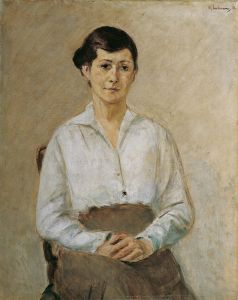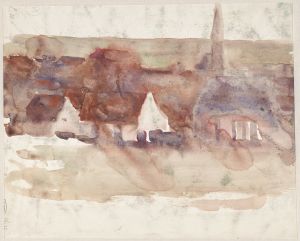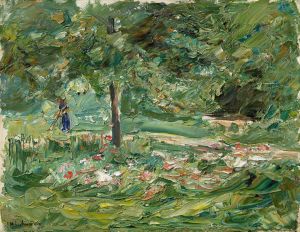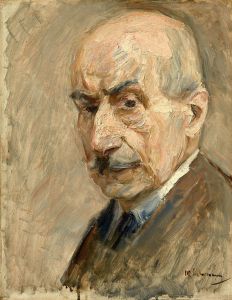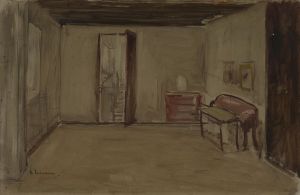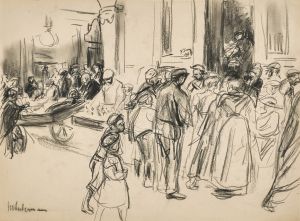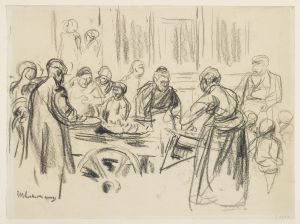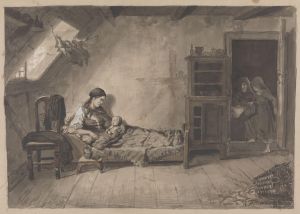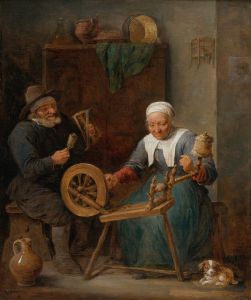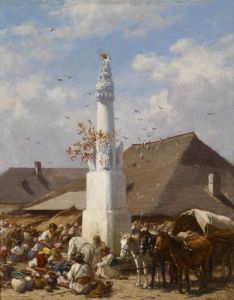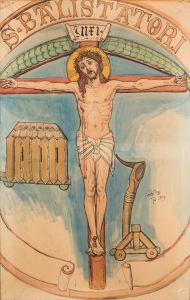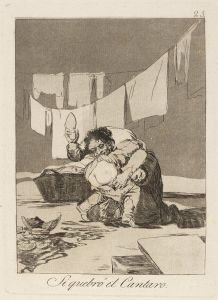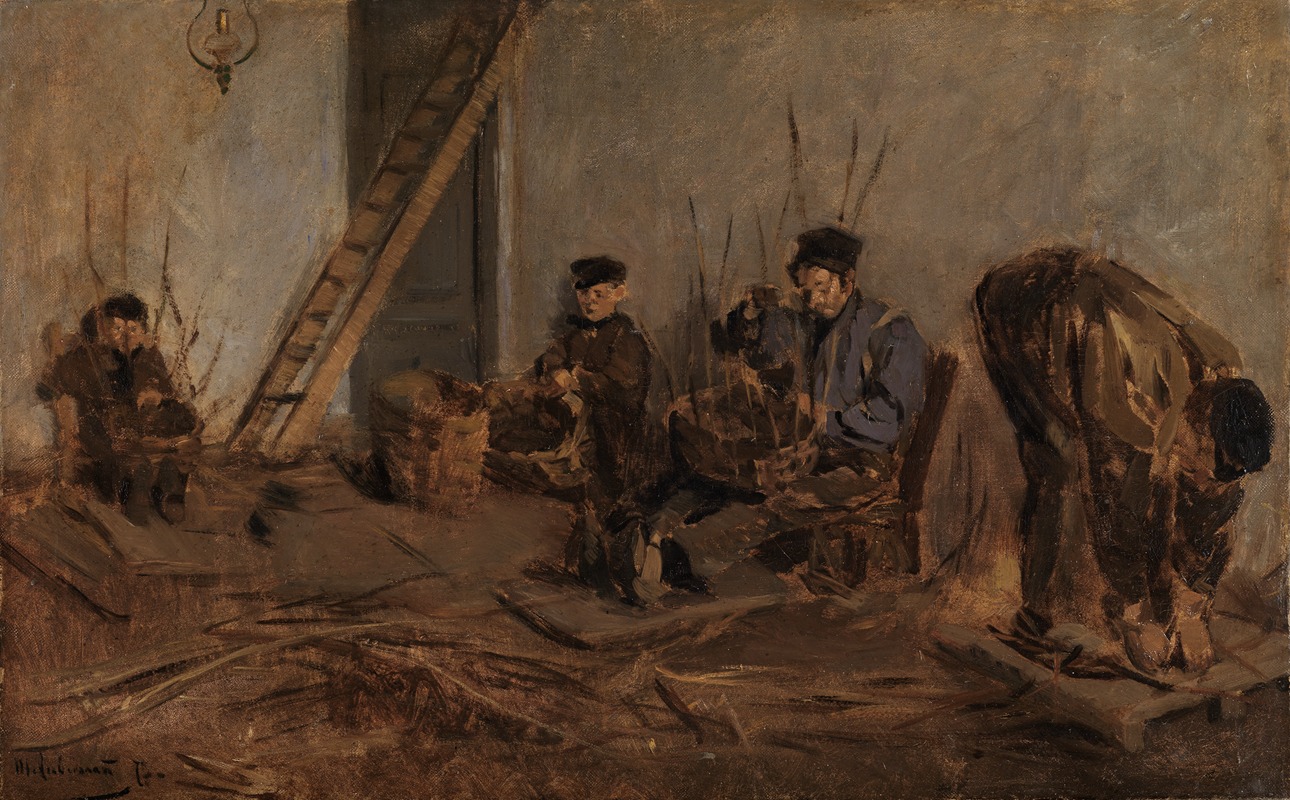
Die Korbflechter
A hand-painted replica of Max Liebermann’s masterpiece Die Korbflechter, meticulously crafted by professional artists to capture the true essence of the original. Each piece is created with museum-quality canvas and rare mineral pigments, carefully painted by experienced artists with delicate brushstrokes and rich, layered colors to perfectly recreate the texture of the original artwork. Unlike machine-printed reproductions, this hand-painted version brings the painting to life, infused with the artist’s emotions and skill in every stroke. Whether for personal collection or home decoration, it instantly elevates the artistic atmosphere of any space.
Max Liebermann's painting Die Korbflechter (The Basket Weavers) is a notable work by the German painter, who is widely regarded as one of the leading figures of Impressionism in Germany. Created in 1882, the painting exemplifies Liebermann's focus on depicting scenes of everyday life, particularly those involving labor and rural activities. This work is part of a broader series of paintings in which Liebermann explored the lives of working-class individuals, showcasing their dignity and the simplicity of their tasks.
The painting portrays a group of basket weavers engaged in their craft, likely in a rural or workshop setting. Liebermann's attention to detail and his use of light and shadow bring a sense of realism to the scene, while his loose brushwork reflects the influence of the Impressionist movement. The composition emphasizes the physicality of the workers and their connection to their environment, highlighting the repetitive yet skilled nature of their labor. The subdued color palette and naturalistic tones further enhance the authenticity of the depiction.
Liebermann's interest in such themes was influenced by his travels and exposure to the works of other European artists, particularly those from the Netherlands. His admiration for Dutch Golden Age painters, such as Frans Hals and Rembrandt, is evident in his focus on ordinary people and his ability to capture the nuances of light and texture. At the same time, his engagement with contemporary Impressionist techniques allowed him to bring a modern sensibility to his work.
Die Korbflechter reflects Liebermann's broader artistic philosophy, which sought to elevate scenes of everyday life to the level of fine art. By focusing on the labor of basket weaving, a humble yet essential craft, Liebermann underscores the value of work and the humanity of the individuals performing it. This approach was part of a larger trend in 19th-century art, where artists sought to move away from grand historical or mythological subjects and instead focus on the realities of modern life.
The painting is now housed in the Alte Nationalgalerie (Old National Gallery) in Berlin, Germany, where it is part of a collection that includes many of Liebermann's works. It continues to be celebrated as an example of his ability to merge realism with Impressionist techniques, offering a poignant and respectful portrayal of working-class life.






